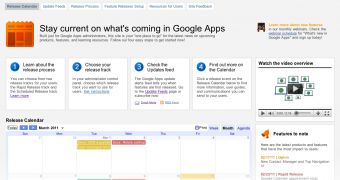Google is very much interested in the enterprise market and it's making some progress with Google Apps. While some aspects offer great advantages, there are still plenty of places where Google is behind traditional enterprise market players.
But it's slowly getting closer, one of the latest advances is a new option allowing Apps admins to disable automatic updates and have them implemented at a later date, at least one week after they become available.
Of course, one of the big advantages of web apps is that any update is purely server side and gets pushed instantly with no hassle for the users.
While this may generally be the preferred way, some admins want more control over what new features are introduced or when big changes occur.
"We’ve heard from some customers with complex IT environments that they’d like more notice before new features are deployed to their users," Anna Mongayt, Enterprise Operations at Google, wrote.
"To address these requests, we’re happy to announce a new feature release process aimed at helping you balance the benefits of accessing improvements as soon as they're ready with the task of integrating the changes into your organization," she announced.
Google Apps admins now have two ways of implementing updates. The way it's been done so far is to roll out updates as soon as they become available and have them enabled for all users instantly. This will be the first option.
Google believes that small companies and organizations that want a mostly hands-off approach to administrating Apps will prefer this method.
The second method is to enable scheduled updates in which new features are introduced once a week at a pre-determined time to allow admins and other staff to become familiar with the changes.
This won't allow admins to prevent updates altogether, but they will get a week's notice before being implemented. Any new features and changes will be rolled out each Tuesday. In order to give admins a heads-up on new features, a "What's New" tool has been set up to showcase any new feature and change.

 14 DAY TRIAL //
14 DAY TRIAL //